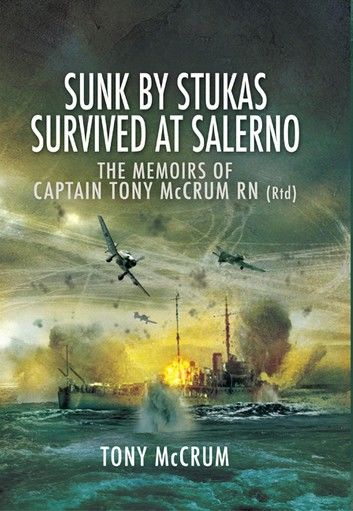| FindBook |
有 1 項符合
Sunk by Stukas, Survived at Salerno的圖書 |
 |
Sunk by Stukas, Survived at Salerno 作者:Tony McCrum 出版社:Pen & Sword Books 出版日期:2010-08-19 語言:英文 |
| 圖書館借閱 |
| 國家圖書館 | 全國圖書書目資訊網 | 國立公共資訊圖書館 | 電子書服務平台 | MetaCat 跨館整合查詢 |
| 臺北市立圖書館 | 新北市立圖書館 | 基隆市公共圖書館 | 桃園市立圖書館 | 新竹縣公共圖書館 |
| 苗栗縣立圖書館 | 臺中市立圖書館 | 彰化縣公共圖書館 | 南投縣文化局 | 雲林縣公共圖書館 |
| 嘉義縣圖書館 | 臺南市立圖書館 | 高雄市立圖書館 | 屏東縣公共圖書館 | 宜蘭縣公共圖書館 |
| 花蓮縣文化局 | 臺東縣文化處 |
|
|
圖書介紹 - 資料來源:樂天KOBO 評分:
圖書名稱:Sunk by Stukas, Survived at Salerno
In January 1939 he shipped his first stripe to become an Acting Sub Lieutenant and joined HMS Skipjack, a fast fleet minesweeper, as navigator. The ship was initially based at Harwich as part of the 2nd Minesweeping Flotilla. Having worked-up to operational readiness the flotilla moved to their wartime station at Dover. In May 1940 Skipjack arrived off the Dunkirk beaches, one of the first ships to help the evacuation of the British Expeditionary Force. Having made several successful Channel crossings ferrying home troops, the French coast suddenly became even more dangerous as the Luftwaffe presence increased in support of their advancing army which had now reached the area. With a full load of troops aboard, Skipjack was suddenly attacked by ten Stukas and was mortally hit and sunk. Eventually rescue was at hand and McCrum was landed at Ramsgate. 19 of the crew and 294 troops went down with the ship. In June 1940 he was appointed First Lieutenant of HMS Bridlington, a new minesweeper of the same class as Skipjack. In June 1941 he joined HMS Mendip, a Hunt Class destroyer with the task of defending the east coast against e-boat attack. Then came a complete change when he was ordered to HMS Largs to become the Signals Officer in Charge. This was an ex West Indies banana boat that had been converted into a Landing Craft Headquarters Ship. Her task was to carry an admiral and general who would control all the forces in the early days of an assault. In April 1943, Largs arrived in North Africa and began preparations for the Sicily landings. Operation Husky started on 8 July and proved a complete success with a bridgehead being established within hours. The next step was Italy, the Salerno landing. McCrum was again heavily involved with the HQ planning staff and the US Navy and was in charge of the ULTRA operations within the area. Salerno proved to be a much harder battle and was well defended. Having spent eighteen months working in the Mediterranean theatre, and various landings in France, McCrum was ordered home and joined the destroyer HMS Tartar on 15 January 1945 as Staff Signals Officer, 8th Destroyer Flotilla. They were bound for the Far East and the war with Japan and it was there, in Trincomlee harbour that the end of WWII was celebrated.
|










